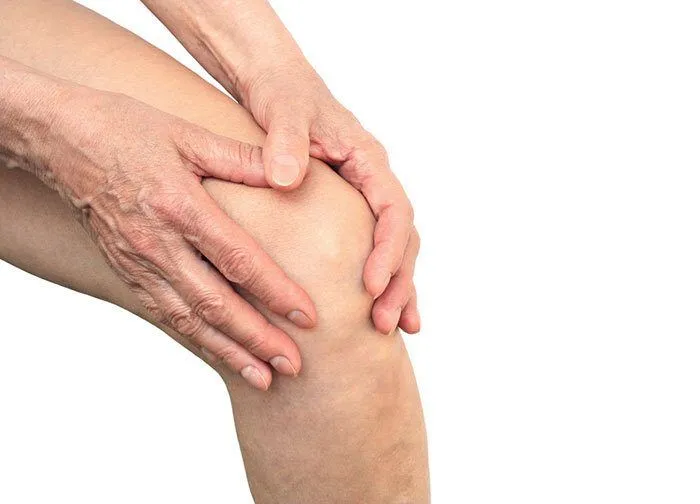Osteoarthritis, often referred to simply as OA, is a common yet often misunderstood joint condition that affects millions of people worldwide. It’s essential to understand this condition, as it can have a significant impact on one’s quality of life. Osteoarthritis is a degenerative joint disease that primarily affects the cartilage in your joints. Cartilage is the firm, rubbery tissue that covers the ends of bones in a joint, allowing them to glide smoothly and absorb shock during movement. In osteoarthritis, this cartilage begins to break down and deteriorate, leading to pain, stiffness, and reduced joint function.
Causes of Osteoarthritis
Osteoarthritis (OA) is a complex and multifactorial condition with various contributing factors. While the exact cause of OA is not fully understood, researchers have identified several key factors that play a role in its development.
Some Common Causes
- Age: Age is one of the most significant risk factors for OA. The likelihood of developing OA increases with advancing age. This is primarily because the wear and tear on joints accumulate over time. The cartilage that cushions the joints becomes less resilient and more susceptible to damage as we age.
- Genetics: Genetics can play a role in predisposing individuals to OA. If you have a family history of OA, you may be at a higher risk of developing the condition. Specific genes associated with cartilage structure and joint function have been linked to OA susceptibility.
- Joint Injuries: Previous joint injuries, such as fractures, dislocations, or ligament tears, can increase the risk of developing OA in the affected joint. Joint injuries can alter the mechanics of the joint and accelerate the breakdown of cartilage.
- Obesity: Carrying excess body weight places additional stress on weight-bearing joints, such as the knees and hips. This excess load can lead to the breakdown of cartilage over time. Obesity is a significant modifiable risk factor for OA, and losing weight can help reduce the risk and manage symptoms in individuals with OA.
- Gender: Osteoarthritis is more common in women, especially after menopause. Hormonal changes, along with other factors, may contribute to the increased prevalence of OA in women.
- Joint Overuse: Repetitive joint movements or activities that put excessive stress on a particular joint can contribute to the development of OA. Jobs or sports that involve repetitive motions, such as kneeling, squatting, or lifting heavy loads, can increase the risk of OA in specific joints.
- Muscle Weakness and Imbalance: Weak muscles around a joint can fail to provide adequate support, leading to increased wear and tear on the joint. Muscle imbalances can also alter joint mechanics, increasing the risk of OA development.
- Metabolic Factors: Some metabolic conditions, such as diabetes and hemochromatosis (excessive iron buildup), have been associated with an increased risk of OA. These conditions can affect joint health and contribute to OA development.
- Inflammatory Conditions: Chronic inflammatory conditions, such as rheumatoid arthritis, can lead to joint damage and increase the risk of secondary osteoarthritis.

Symptoms of Osteoarthritis
Osteoarthritis (OA) is a degenerative joint condition characterized by a range of symptoms that can significantly impact an individual’s daily life. The primary symptom of OA is joint pain, which often manifests as a deep, persistent ache in the affected joint. This pain tends to worsen with joint use and can lead to significant discomfort. Alongside pain, joint stiffness is a common complaint, especially in the morning or after periods of inactivity. This stiffness can make it challenging to initiate movement and may require gradual warm-up. Reduced range of motion in the affected joint is another prevalent symptom, hindering one’s ability to perform activities that require full joint mobility.
Inflammation is a hallmark feature of OA and can result in joint swelling, tenderness, and warmth around the affected area. Some individuals with OA also report experiencing a grating or scraping sensation within the joint during movement, known as crepitus, which is due to the deterioration of cartilage. As the condition progresses, bone spurs or osteophytes may develop around the joint, contributing to pain and further limiting mobility. Muscle weakness is often associated with OA, as individuals may avoid using the painful joint, leading to diminished muscle strength. This can, in turn, worsen joint instability, potentially increasing the risk of falls or injuries. Furthermore, fatigue can set in due to chronic pain and discomfort, making it challenging to engage in daily activities. Overall, the combination of these symptoms underscores the importance of early diagnosis and effective management strategies for individuals living with OA.
Diagnosis
To diagnose osteoarthritis, a healthcare provider will typically perform a physical examination, review your medical history, and use imaging tests such as X-rays or MRI scans to assess the affected joint’s condition. They may also perform blood tests to rule out other types of arthritis.
Treatment Options
While there is no cure for osteoarthritis, various treatment options can help manage its symptoms and improve the quality of life:
- Lifestyle Changes: Maintaining a healthy weight, engaging in regular low-impact exercise, and avoiding activities that exacerbate symptoms can help.
- Physical Therapy: A physical therapist can provide exercises and techniques to strengthen muscles, improve joint flexibility, and reduce pain.
- Medications: Over-the-counter pain relievers like acetaminophen or nonsteroidal anti-inflammatory drugs (NSAIDs) can help manage pain and inflammation.
- Injections: Corticosteroid or hyaluronic acid injections may be recommended to reduce pain and inflammation.
- Assistive Devices: The use of braces, splints, or orthotic shoe inserts can provide joint support.
- Surgery: In severe cases, joint replacement surgery may be necessary, where the damaged joint is replaced with a prosthetic one.

Prevention
While some risk factors for osteoarthritis are beyond your control, there are steps you can take to reduce your risk or manage the condition effectively:
- Maintain a Healthy Weight: Avoiding obesity or losing excess weight can significantly reduce the stress on your joints.
- Exercise Regularly: Engage in low-impact exercises like swimming, cycling, and walking to strengthen muscles and support joint health.
- Protect Your Joints: Use proper body mechanics and protective gear when participating in sports or engaging in activities that stress your joints.
- Eat a Balanced Diet: A diet rich in antioxidants and omega-3 fatty acids can promote joint health.
Osteoarthritis is a prevalent joint condition that affects millions worldwide, but with the right knowledge and management strategies, you can lead a fulfilling and active life. Early diagnosis, lifestyle changes, and appropriate medical interventions can help mitigate its impact and maintain joint function.